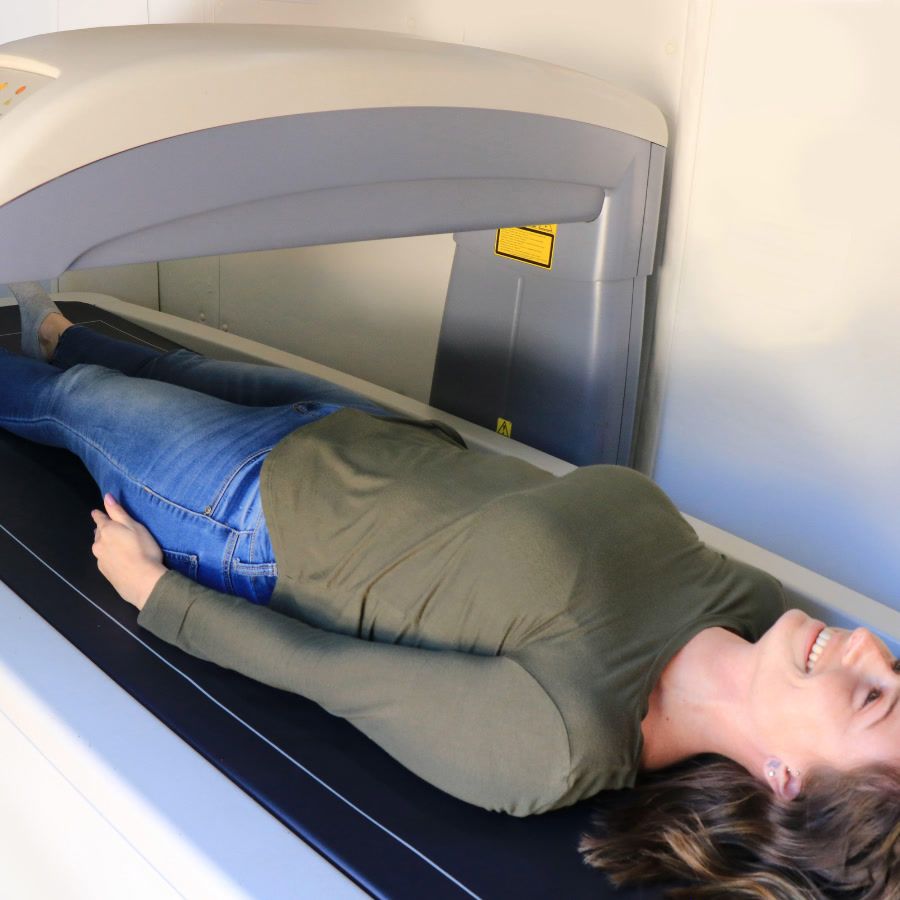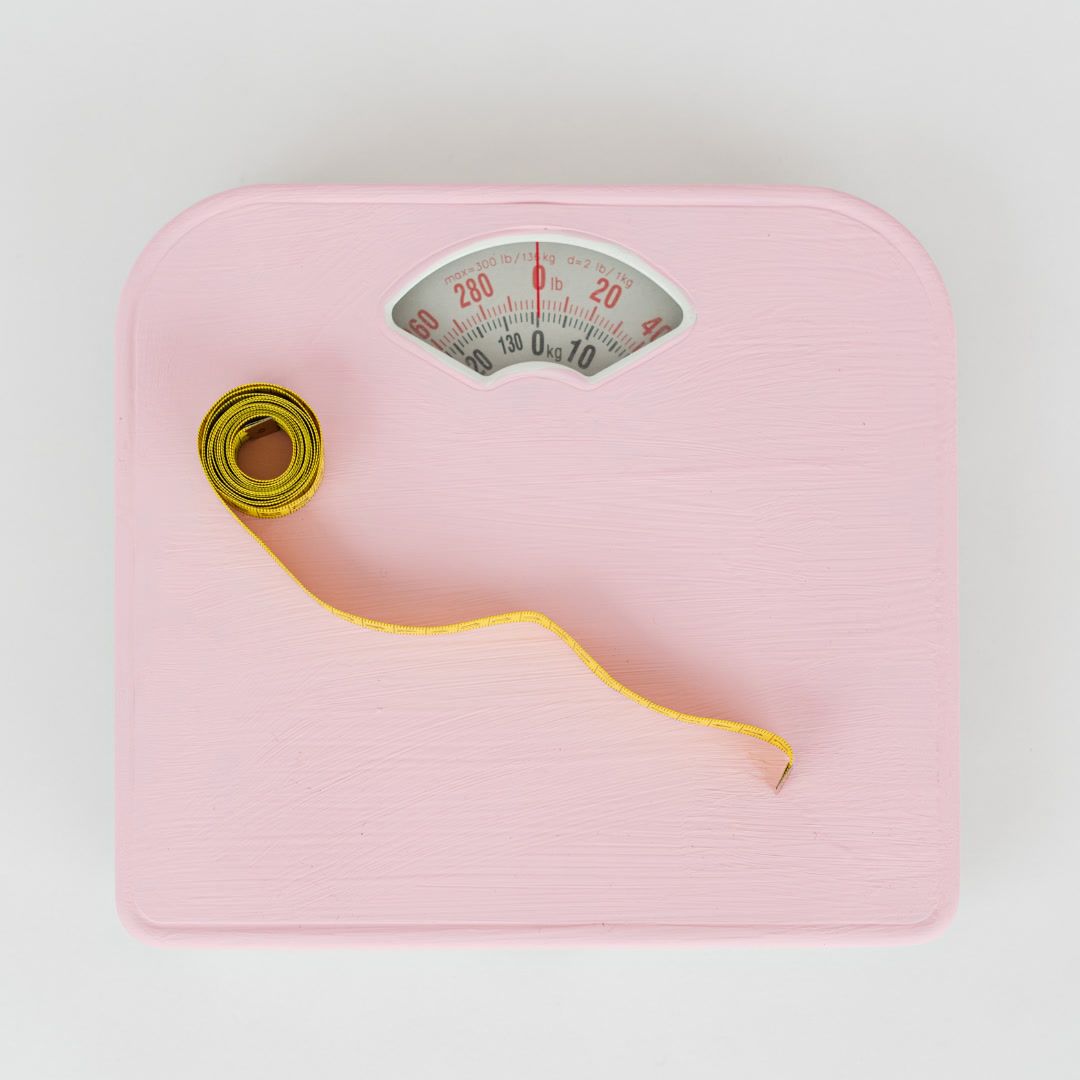Kettlebell Swing Benefits: Build Power & Burn Fat
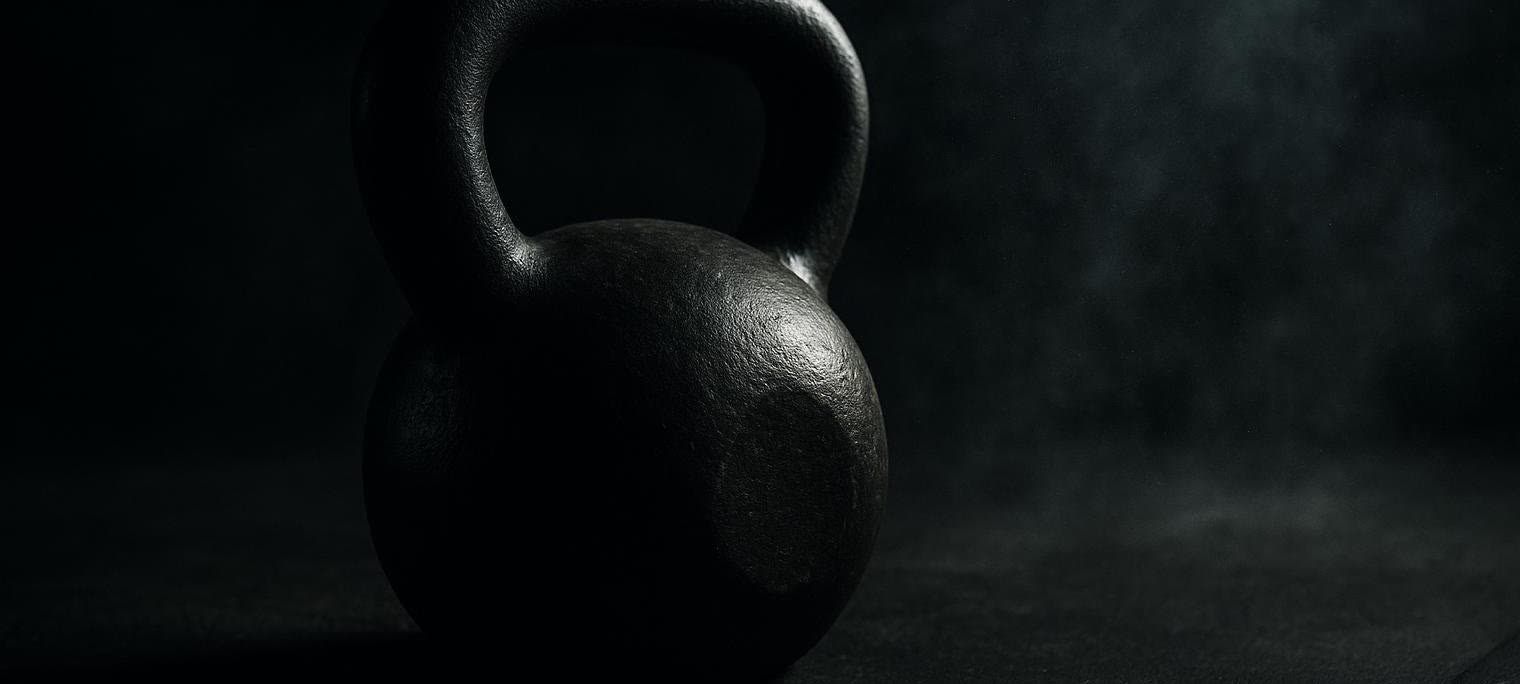
Kettlebell Swing Benefits: Build Power & Burn Fat
A properly executed kettlebell swing delivers rare efficiency: one hip-hinging motion that simultaneously spikes your heart rate, torches calories, and activates the entire backside of your body. The kettlebell swing benefits detailed below are backed by emerging research and real-world coaching experience, giving you clear guidance on technique, programming, and progress tracking.
Quick Take: Why Kettlebell Swings Are Worth Your Time
- Full-Body Power Builder. The explosive hip hinge recruits your entire posterior chain—glutes, hamstrings, spinal erectors—while also engaging your core, shoulders, and grip.
- Cardio + Strength in One Move. Lab data show two-handed swings can drive heart rates above 85 % of your maximum—well into vigorous-intensity territory (Farrar et al., 2010).
- Time Efficiency. Ten to twenty minutes of focused swings deliver measurable conditioning gains—ideal for busy schedules.
- Low Equipment Footprint. One kettlebell is a portable gym that fits under your desk.
- Transferable to Real Life. The hip-hinge pattern trains the same muscles that power sprints, jumps, and even makes everyday movements like standing up from a chair feel effortless.
1. Metabolic Benefits: High Calorie Burn in Record Time
1.1 What the Research Shows
Direct research quantifying calorie burn during two-handed swings is still emerging. While we await more swing-specific data, findings from a closely related explosive movement—the kettlebell snatch—offer a useful benchmark. An American Council on Exercise (ACE) study reported that trained subjects burned approximately 20 calories per minute during a 20-minute snatch workout—comparable to running a 6-minute-mile pace.
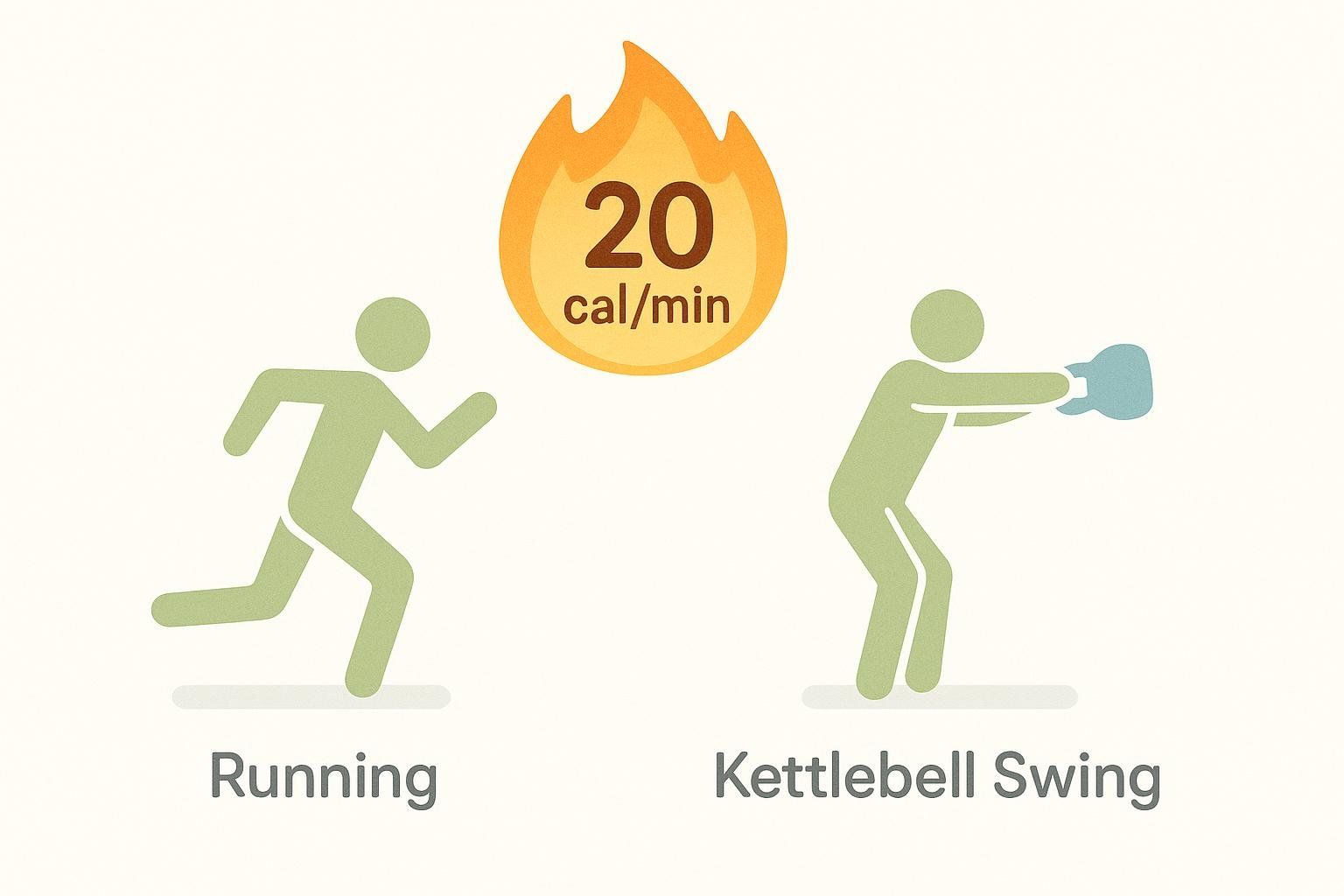
The metabolic demand of intense swing sessions is often compared to other high-intensity interval modalities, underscoring their value for efficient fat-loss programming.
1.2 After-Burn Effect
Because swings hover between resistance exercise and interval cardio, they elevate excess post-exercise oxygen consumption (EPOC) —the so-called after-burn effect. A recent study found kettlebell complexes that included swings kept oxygen uptake above resting levels for up to 60 minutes post-workout, equating to roughly 55 extra calories burned (Sturdy et al., 2024).
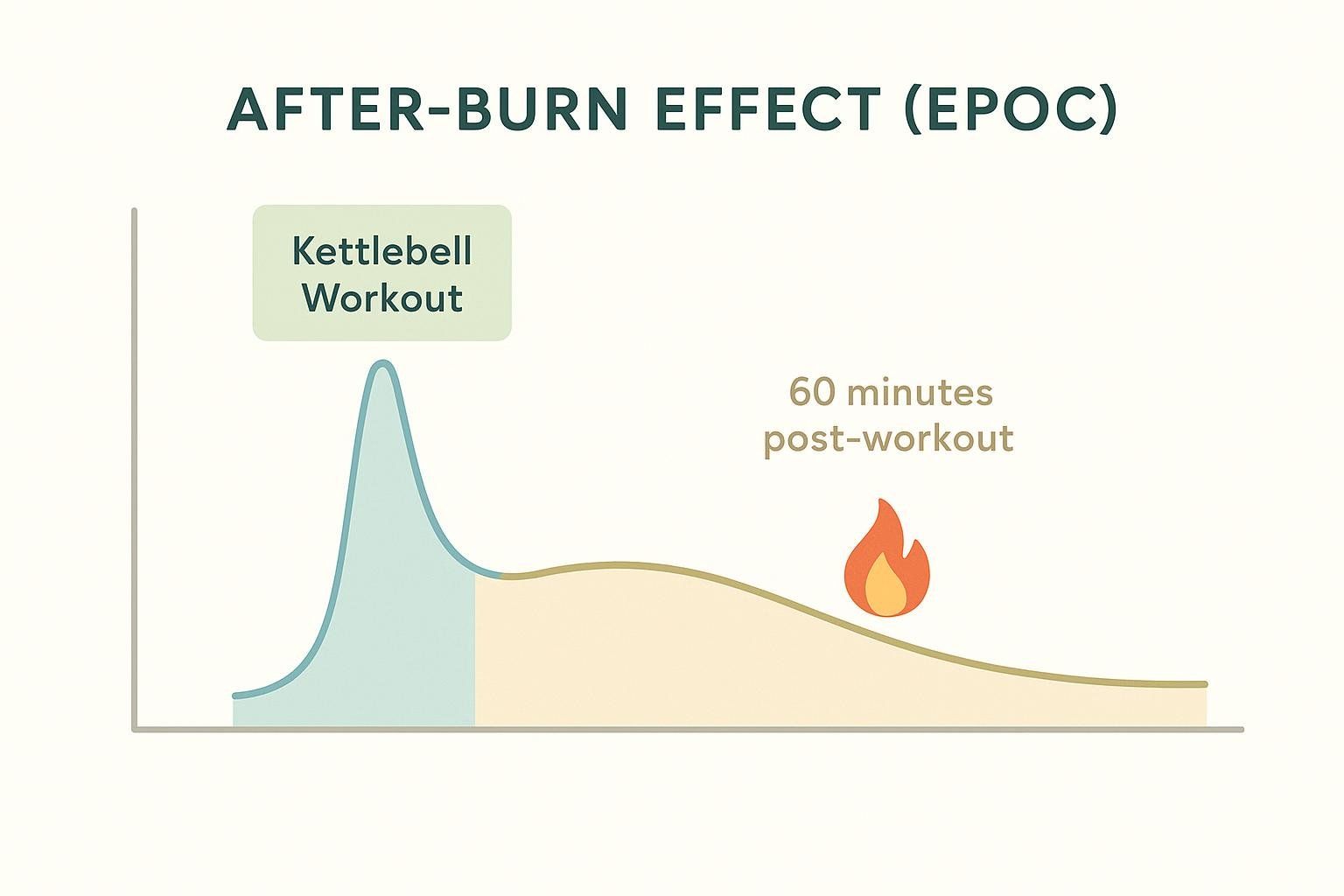
Takeaway: If fat loss is the goal, pairing regular swing sessions with periodic DEXA scans confirms the weight you drop is coming from fat—not precious lean muscle.
2. Strength & Power Benefits: Posterior-Chain Domination
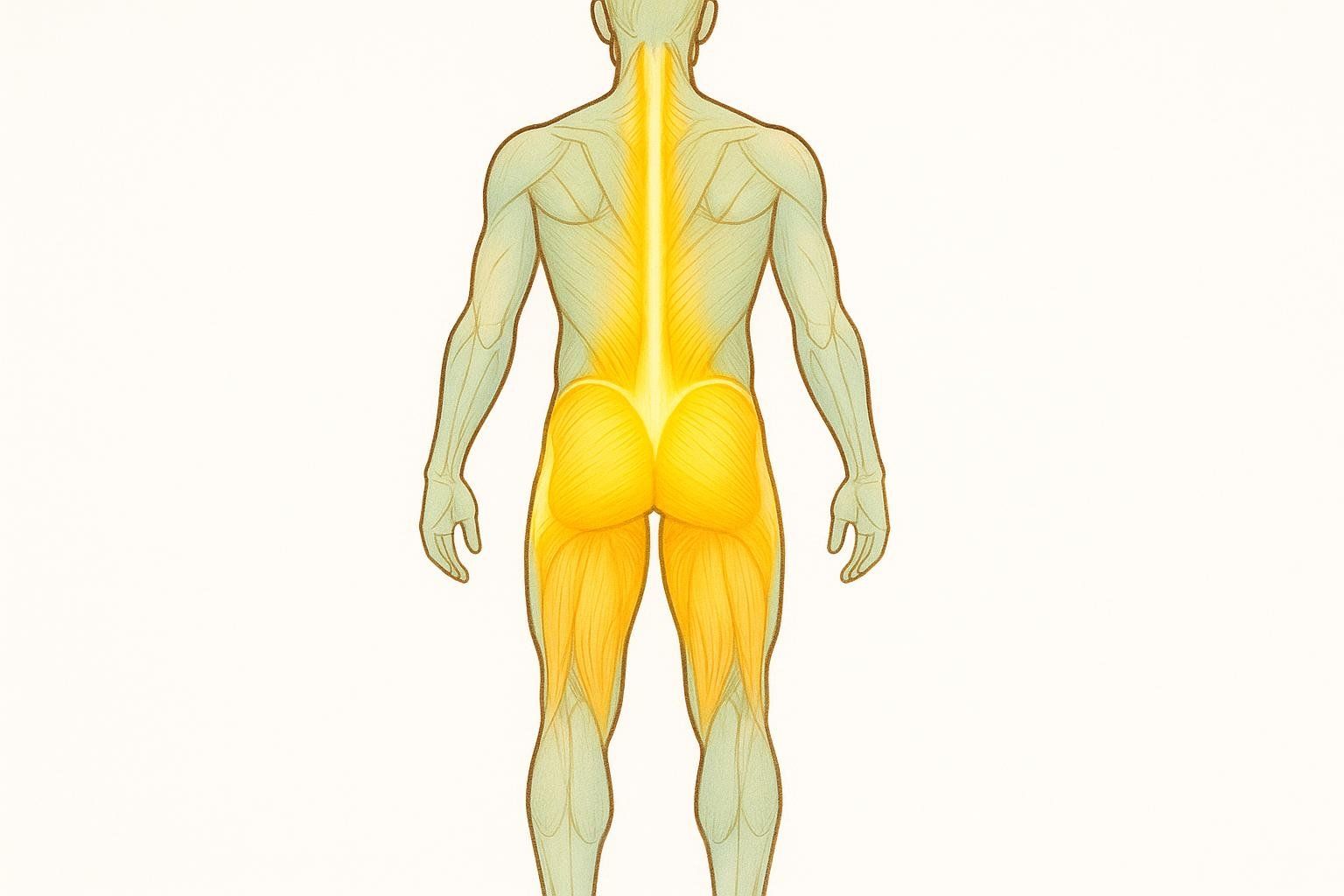
2.1 Muscle Activation Research
Electromyography (EMG) shows two-handed swings create high levels of glute activation along with meaningful hamstring engagement (Van Gelder et al., 2015). Another comparison found swings preferentially targeted the semitendinosus over other hamstring heads—valuable for hamstring injury prevention (Zebis et al., 2013).
2.2 Explosive Hip Hinge: A Key to Athletic Carryover
The rapid hip extension at the top of each swing mirrors the power phase of sprints and jumps. That’s why coaches use swings to boost vertical leap and sprint acceleration. Runners also benefit from better glute firing and trunk stiffness—key for efficient stride mechanics. For a sport-specific template, check out our strength training program for runners.
3. Cardiovascular & Conditioning Benefits
A 12-minute continuous swing protocol with a 16-kg bell drove average heart rates to 165 bpm—about 86.8 % of HRmax in college-aged men (Farrar et al., 2010).
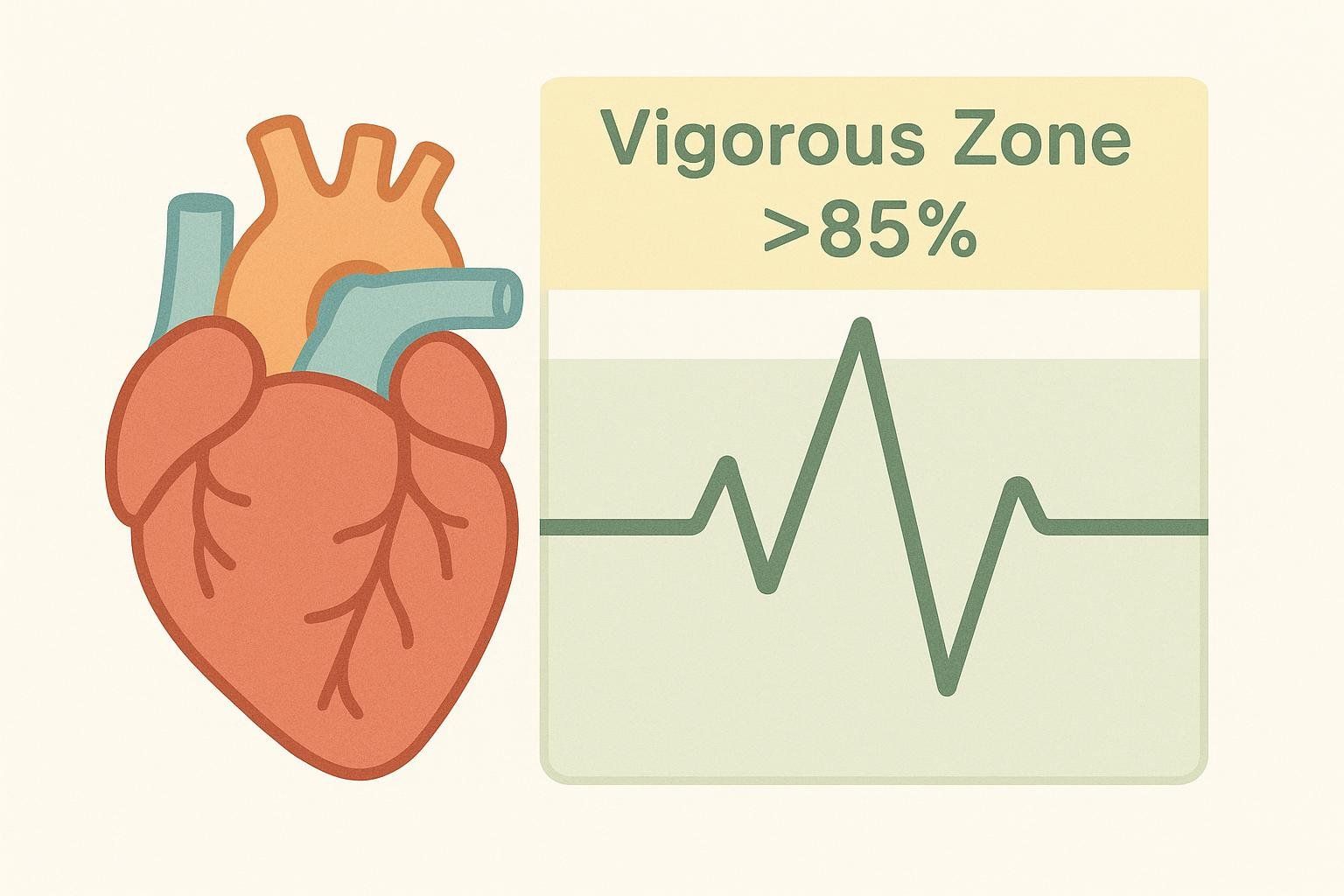
That meets the American College of Sports Medicine’s definition of vigorous-intensity cardio and is sufficient to improve VO₂ max when performed regularly.
4. Functional & Postural Benefits
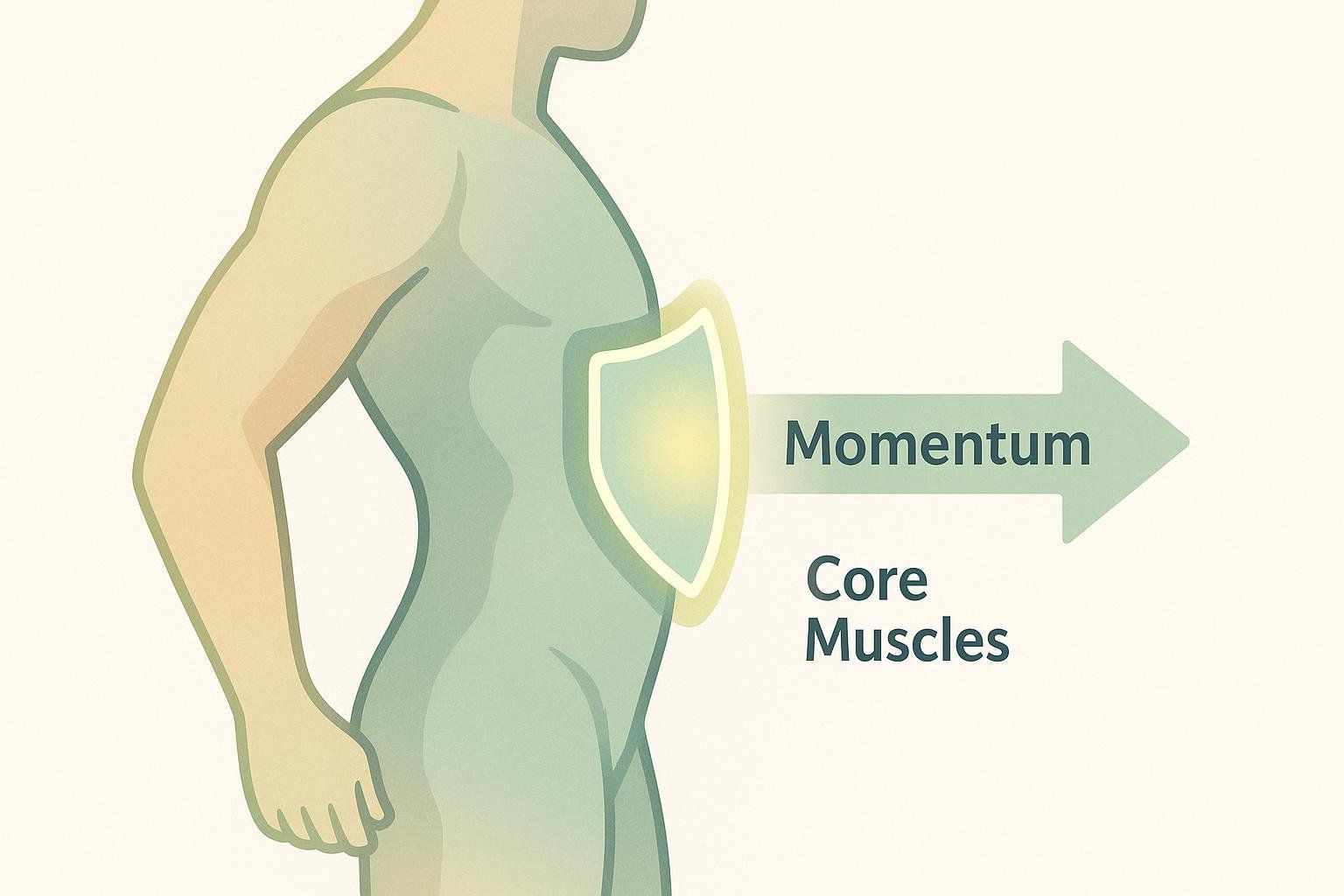
- Core Stability. The bell’s forward momentum forces your abs to brace hard every rep.
- Spine-Friendly Hip Hinge. Learning to hinge protects your lumbar discs during everyday lifting tasks, not just deadlifts.
- Grip Strength. Heavy swings tax the forearm flexors—crucial for climbers, grapplers, and anyone opening a pickle jar.
5. Muscle Groups Worked (At a Glance)
| Primary | Secondary | Stabilizers |
|---|---|---|
| Gluteus maximus | Quadriceps | Core (rectus abdominis, obliques, TVA) |
| Hamstrings (semitendinosus, biceps femoris) | Deltoids (front) | Forearm flexors |
| Erector spinae | Upper back (traps, rhomboids) | Rotator cuff |
6. Perfecting Your Form: Step-by-Step
- Set Up: Stand with your feet hip- to shoulder-width apart and place the kettlebell about a foot in front of you on the floor. Hinge at the hips, keep a neutral spine, and grasp the handle with both hands.
- Hike: Pull your shoulders down and back (i.e., engage your lats), then hike the bell between your thighs as if snapping a football, creating tension in your hamstrings.
- Drive: Explosively extend your hips and knees, snapping them straight to project the bell forward using glute power—not your arms.
- Float: Let the bell rise to roughly chest height, allowing it to float while you keep your arms straight and relaxed.
- Reload: Guide the bell back down; hinge at the hips to absorb the momentum and prepare immediately for the next rep.
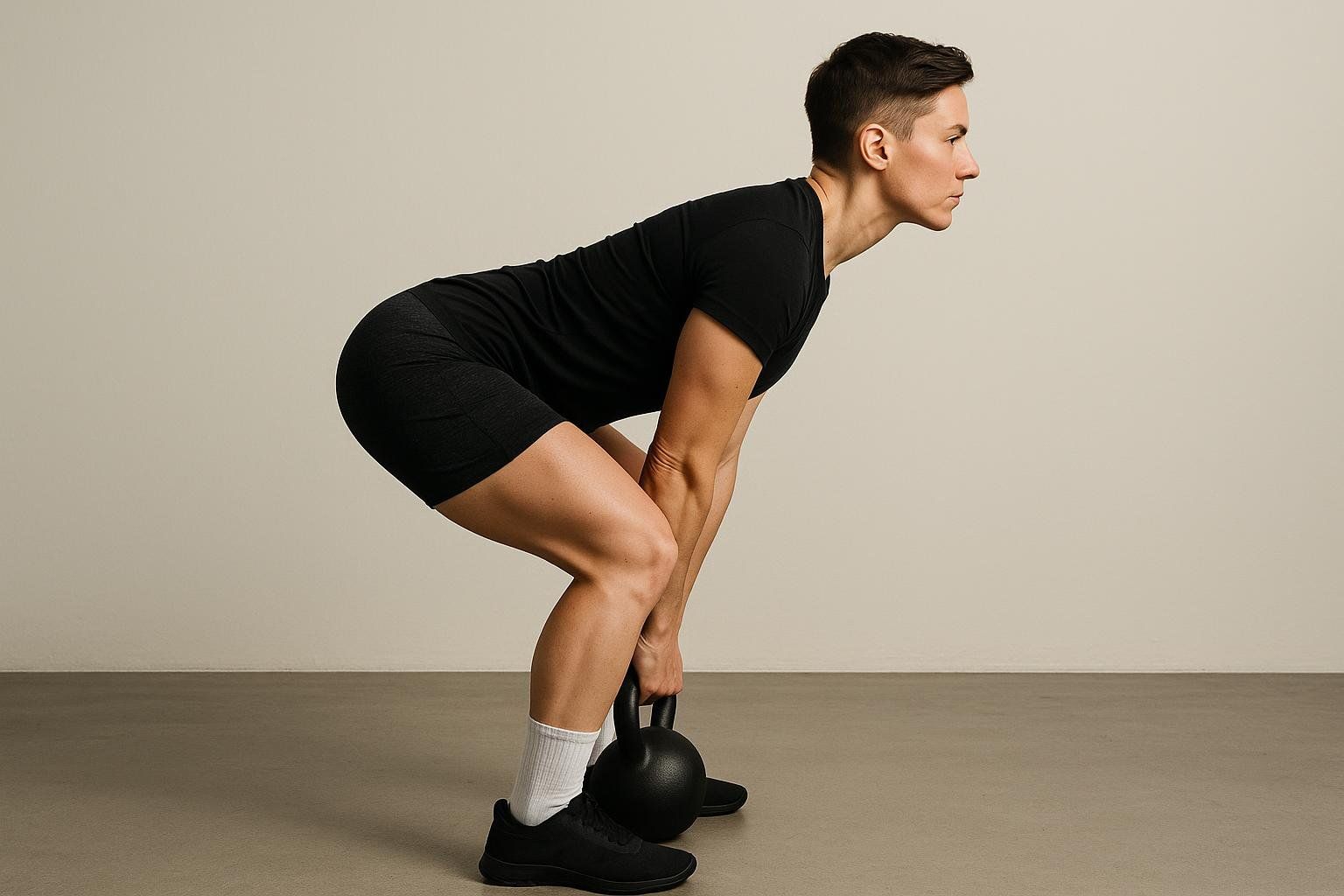
Common Mistakes to Avoid
- Lifting with the arms instead of the hips
- Squatting the movement (too much knee bend)
- Hyper-extending the lower back at the top
- Going too heavy too soon—master technique first
Need a movement screen first? Our guide to functional movement screening shows you how to spot mobility red flags.
7. Programming Templates
7.1 Beginner 10-Minute EMOM
Every Minute on the Minute for 10 minutes
- Perform 10 two-handed swings with a weight you can swing powerfully and safely for all sets.
Result: 100 quality reps in 10 minutes—the classic “100-swings-a-day” challenge.
7.2 Runner’s Hip-Power Booster (2 × / Week)
| Movement | Sets | Reps |
|---|---|---|
| Two-handed swings | 4 | 15 |
| Single-leg Romanian deadlift | 3 | 8 / leg |
| Plank march | 3 | 30 sec |
7.3 Time-Crunched Full-Body Circuit (15 min)
- 15 swings
- 10 push-ups
- 8 goblet squats
- Rest 30 seconds
Repeat 5 rounds.
8. Safety & Contraindications
Swings are safe when loaded appropriately, but skip them (for now) if you have:
- Acute low-back pain or disc injury
- Uncontrolled hypertension (due to spikes in intra-abdominal pressure)
- Unstable shoulder or elbow injuries
Always get a green light from a qualified health professional before beginning a new program.
9. Tracking Progress: Why a DEXA Scan Beats the Scale
Traditional bathroom scales can’t tell if your weight change is fat or muscle. A BodySpec DEXA scan provides precise readings of fat mass, lean mass, and even hard-to-see visceral fat. Schedule a baseline scan, train with swings for 8–12 weeks, then re-test to quantify exactly how much stronger and leaner you’ve gotten.
10. Frequently Asked Questions
How many kettlebell swings should I do per day?
For general fitness, 100 swings split across 5–10-minute sessions is a popular benchmark. Beginners can start with 3 sets of 15–20 swings, 3–4 times per week.
What weight should I start with?
Most men begin around 12–16 kg (26–35 lb), women 8–12 kg (18–26 lb) —light enough to learn, heavy enough to engage the hips.
Can swings replace cardio?
They can hit vigorous-intensity cardio zones, but variety matters. Mix swings with walking, jogging, or cycling for balanced conditioning.
Will swings hurt my back?
Poor form might, but a neutral spine and hip hinge make swings spine-sparing. If pain persists, consult a professional.
The Bottom Line
These kettlebell swing benefits—a potent blend of calorie-scorching cardio, full-body strength, and athletic power—make the exercise a powerful and efficient choice for almost any fitness goal. Master the hinge, program intelligently, and track your body-composition changes with periodic DEXA scans. Your posterior chain—and your schedule—will thank you.
Ready to put data behind your hard work? Book your BodySpec DEXA scan and swing with confidence.
